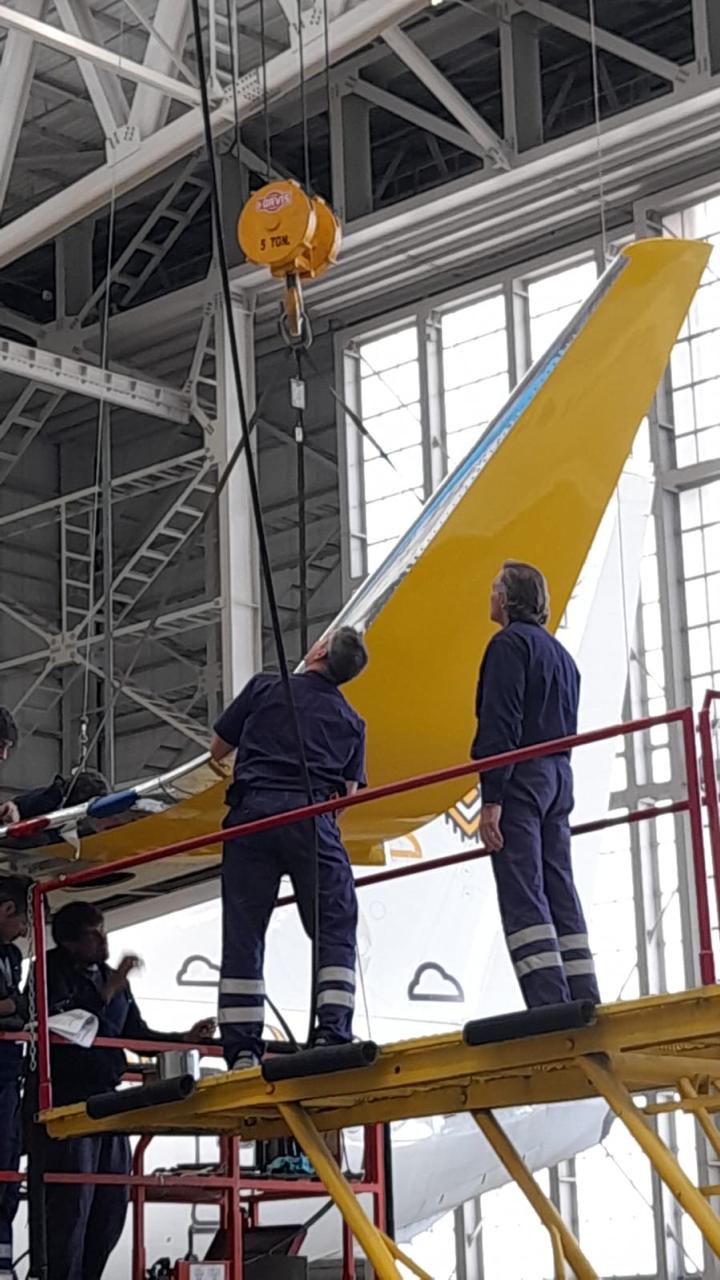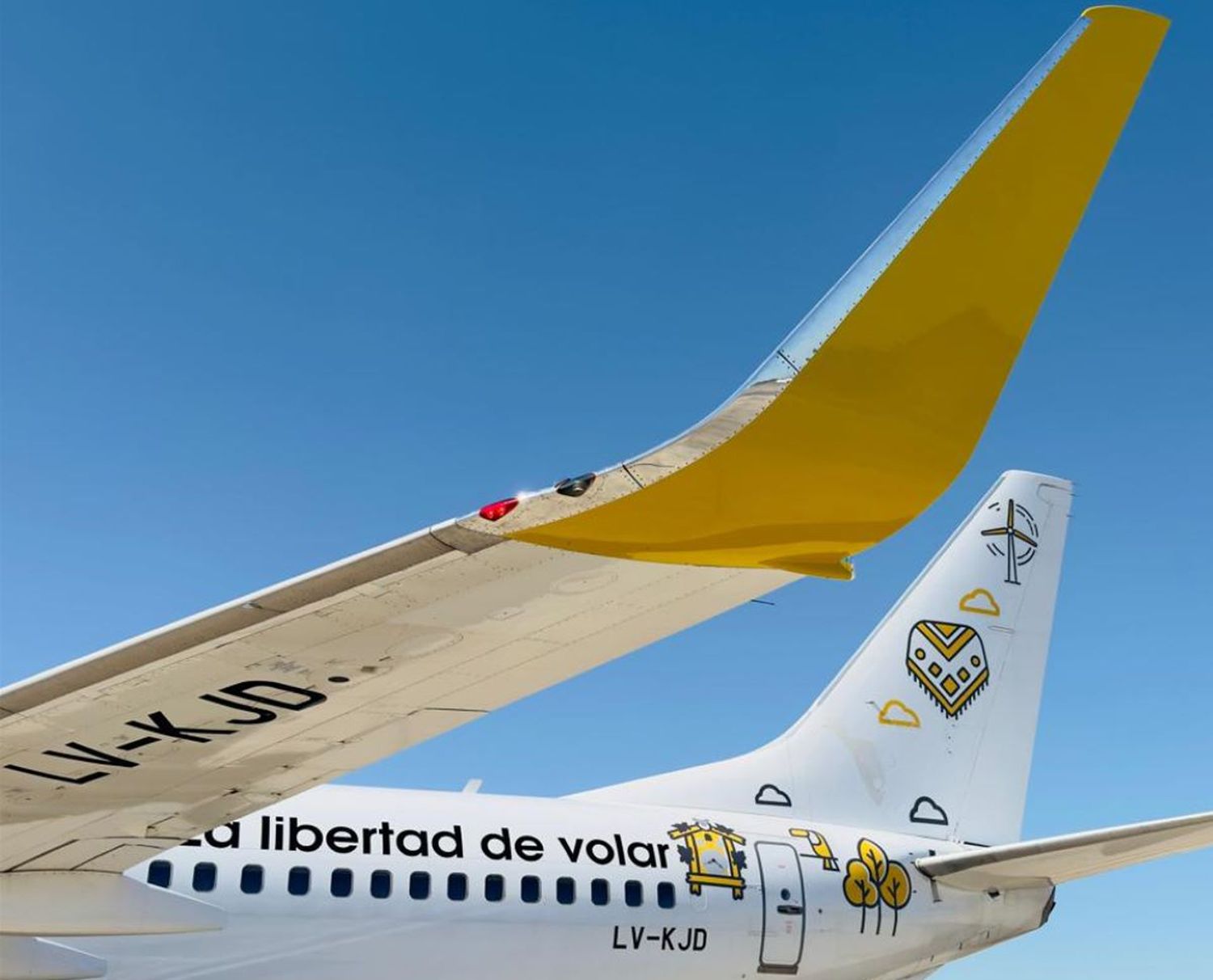Flybondi Enhances Efficiency with Blended Winglets Installation on two of its Boeing 737-800s
Flybondi has completed the installation of Blended Winglets on two of its aircraft, registered as LV-KJF and LV-KJD, to enhance operational efficiency. This procedure was carried out at the Aerolíneas Argentinas workshops located at Ezeiza Airport, managed by the maintenance team of the provider company. It is estimated that these devices will be installed on a third aircraft in the second half of the year.
The installed blended winglets improve the aircraft’s performance by increasing range and reducing fuel consumption. This contributes to lower CO2 emissions and reduced direct costs.
At the wingtip, high-pressure air from below the wing naturally seeks to move to the low-pressure area above the wing, creating spiral air currents known as wingtip vortices.
These vortices contribute to induced drag, a type of resistance that occurs due to lift generation. By adding vertical fins or extensions at the wingtip, winglets help disrupt these vortices by creating a barrier that redirects airflow, smoothing the transition between high and low-pressure areas, and thereby weakening the vortices. This reduction in vortex strength directly translates to lower induced drag, enhancing the overall aerodynamic efficiency of the aircraft.
Blended winglets are specific wingtip devices characterized by a smooth aerodynamic transition from the wing to the vertical fin. Unlike older designs with sharp angles, blended winglets feature a smooth curve that seamlessly integrates with the wing structure. This design not only reduces drag more effectively and minimizes structural stress and weight.

The concept of Blended Winglets was popularized by Aviation Partners, a company that has developed winglet technology since the 1990s. Their introduction to Boeing 737 aircraft in the early 2000s marked a significant milestone in commercial aviation, leading to widespread adoption across various aircraft models.
“Flybondi implements these improvements to contribute to lower fuel consumption and, in turn, reduce CO2 emissions. I want to highlight the work of our Maintenance team who supervised the tasks,” commented Eduardo Gaspari, Chief Operation Officer of Flybondi. “A clear example is that during the months of April, May, and June, we reduced fuel consumption by 7.45% on the first aircraft equipped with the device, representing a verified saving of over 72,650 kg of fuel during the control period,” he added.

Flybondi flies to 19 national and 3 international destinations through 26 routes (18 domestic from and to Buenos Aires, 5 interprovincial, and 3 international) and has already transported over 11 million passengers.


Para comentar, debés estar registradoPor favor, iniciá sesión